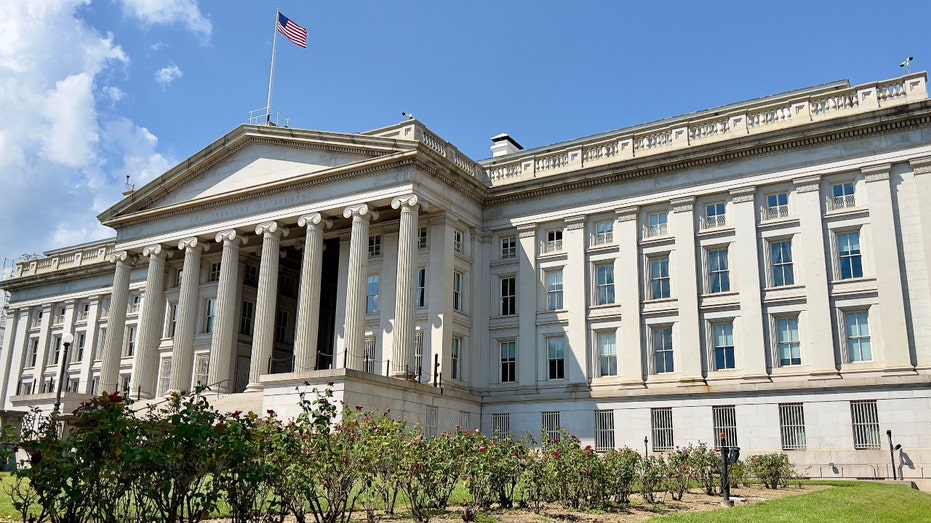US national debt on pace to be 225% of GDP by 2050, Penn Wharton says
US national debt already surpassed $31T this year
Passing massive spending bill would be an insult to voters: Kaylee McGhee White
Washington Examiner's Kaylee McGhee White argues Senate Republicans need to 'debate' the Democrats’ massive spending bill.
The U.S. national debt is on track to continue surging over the next three decades, spiraling to a new high that could ultimately endanger the economy, according to a new analysis published on Monday.
The findings from the Penn Wharton Budget Model, a nonpartisan group at the University of Pennsylvania's Wharton School, found that under current law, the national debt will rise to 225% of U.S. GDP by 2050.
"Current U.S. fiscal policy is in permanent imbalance as current debt plus projected future spending outstrips future tax revenue," the analysis said. "Achieving fiscal balance would require the federal government to permanently increase tax revenues by over 40% or reduce expenditures by 30% or some combination of both."
The national debt already hit $31 trillion in October amid a slew of new spending by President Biden and Democratic lawmakers.
FED SLOWS INTEREST RATE INCREASES WITH 50-BASIS-POINT HIKE, BUT SIGNALS MORE TO COME

People walk outside the U.S. Capitol in Washington, June 9, 2022. (Patrick Semansky, File / AP Newsroom)
Biden signed into law a health care and climate change spending bill – dubbed the Inflation Reduction Act – in early August that would spend an estimated $739 billion over the next decade. Most of that revenue stems from new revenue generated by higher taxes; about half is slated to go toward paying down the debt.
However, that deficit reduction was offset by Biden's decision over the summer to cancel $10,000 in student loan debt for millions of low-income Americans and $20,000 in debt for Pell Grant recipients. Estimates have suggested the policy – which remains tied up in the court system – could cost as much as $1 trillion if the Supreme Court does not strike it down.
Congress is also seeking to pass a roughly $1.7 trillion government funding bill that will keep the government operating through the end of its fiscal year on Sept. 30, 2023. Although details of the so-called omnibus bill are still being hashed out, it will include a record $858 billion for defense, additional aid for Ukraine and funding for different federal government agencies.
However, as the debt climbs higher, so do the interest payments on it: In fiscal year 2022, interest payments on the national debt are projected to be the fastest-growing part of the federal budget, according to the Congressional Budget Office. Payments are expected to triple from nearly $400 billion in fiscal year 2022 to a stunning $1.2 trillion in 2032 – a total of $8.1 trillion over the next decade.

President Biden speaks at the U.S.-Africa Leaders Summit, Dec. 14, 2022, in Washington. (Patrick Semansky / AP Newsroom)
As a share of the economy, total interest on the national debt will hit a record 3.3% of GDP, the broadest measure of goods and services produced in the country, by 2032, the CBO estimated.
In reality, the payments could be even steeper; current interest rates are already higher than those included in the CBO estimate from May, according to the Committee for a Responsible Federal Budget, a nonpartisan group that advocates for reducing the federal debt.
For years, the U.S. has been able to borrow cheaply, as interest rates have remained historically low. However, as the Federal Reserve continues to hike interest rates, short-term rates on Treasury securities will also climb higher, making federal borrowing more expensive.
"The growth in interest costs presents a significant challenge in the long term as well," the Peter Peterson Foundation said.

The Department of the Treasury in Washington, D.C., on Aug. 29, 2022. (Daniel Slim/AFP via / Getty Images)
The CBO's projections show that interest payments could eventually total close to $66 trillion over the next 30 years, eventually taking up almost 40% of all federal revenue by 2052. Interest costs would also become the largest "program," over the next few decades, surpassing defense spending in 2029, Medicare in 2046 and Social Security in 2049.
CLICK HERE TO READ MORE ON FOX BUSINESS
"As interest rates rise and the nation’s debt grows, it will become even more expensive to borrow in the future. Congresses and presidents of both parties, over many years, have avoided making hard choices about our budget and failed to put it on a sustainable path. It is vital for lawmakers to take action on the growing debt to ensure a stable economic future," the Peter Peterson Foundation said.





















